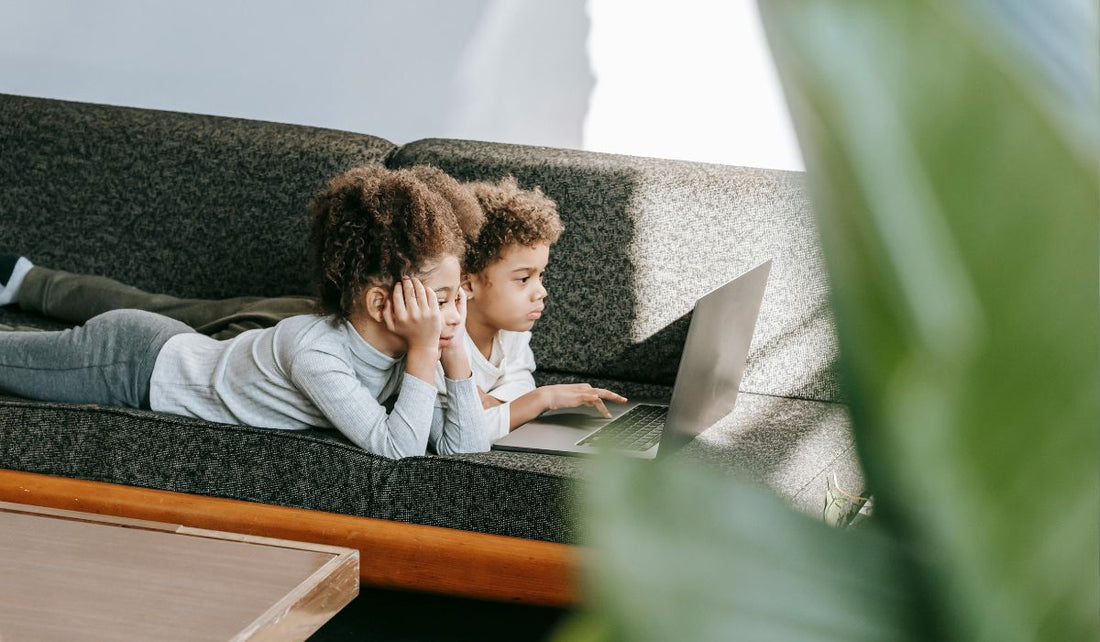As a digital education correspondent, I am around screens a lot. I am also a mum and know the challenges of balancing screen time in our family lives. I wrote The Art of Screen Time to help me and my readers get past the anxiety about children and screens. Here’s a summary of what I learned writing it: enjoy screens; not too much; mostly together. You will be more effective as a parent and have more fun as a family if you drop the guilt and embrace the good that screens have to offer, while balancing media with other priorities. When in doubt, try to use media as a means of connecting.
On average, school-aged children today are spending more waking hours per week with electronic media than on any other single activity. That includes school. Adults, meanwhile, are spending most waking hours engaged with electronic media. Excessive exposure to media, including in the background, has small but measurable negative effects on children of all ages. Of these effects, the ones we have the strongest evidence for are obesity and disrupted sleep. There are risks too of addiction, increased aggression (related specifically to violent content), attention issues, and emotional problems. There is some evidence of larger effects when children are exposed at a younger age. There is no established safe dose and no established toxic dose – every child is different.
Electronic media can have measurable positive effects, too: on reading, school readiness, concentration and learning. They can be an essential resource for family bonding, discovery, creative expression, and fun. Habits are often set in the preschool years, when parents have the most control. But it’s never too late to have a positive influence; different ages require different approaches. Parental rules and attitudes about technology make a measurable, positive difference through the teenage years and beyond.
The core message is that screens and sleep don’t mix. After going through the research and talking to dozens of experts, I found one top priority that parents – and, really, people of all ages – should be paying attention to. It’s sneaky and surprising, but it’s the one issue with the most incontrovertible evidence. No devices later than an hour before bedtime. Don’t keep televisions in children’s bedrooms, don’t make screens part of the bedtime routine, and don’t allow mobile devices in bedrooms overnight. Consider installing a parental control router or other device to enforce this curfew if you need it. Poor-quality sleep and not enough sleep aggravate every negative symptom tied to screen time. Limiting screens in the evening hits directly at the two biggest risk factors – obesity and disturbed sleep – and it helps curb tendencies toward excessive use.
Some families wish to enforce screen time rules. Time is a clear, understandable metric. And there are, increasingly, ways of enforcing it with apps and settings on devices. If you don’t want to limit time, then think instead in terms of priorities and warning signals. Rather than having hard-and fast rules, it makes sense, especially for older children, to work toward setting limits and priorities collaboratively.
We also need to think about screens in terms of priorities: children need to move their bodies every day, ideally outside. They need healthy meals and a calm environment in which to eat without distraction. They need face-to-face interaction with you, other caring adults, and peers. They probably need breaks from the temptations of multitasking to practise concentrating on one thing at a time. And, again, they need to sleep an appropriate amount for their age. To help children make good choices, and to get the best learning benefits, practise joint media engagement and active mediation at least some of the time. Get on the couch with your young child and treat a cartoon like a picture book – point out objects and name them. For older children, discuss what is happening in the story and how the characters feel, talk about their favourite discoveries on social networks, or learn from them how to play a video game. Ask, “What did you see online today?” just like you might ask, “How was school today?” From an early age, encourage creativity and expression as part of your child’s media use. This could be anything from decorating greeting cards using an app, to learning to code with an app, to researching online how a volcano works.
Everyone in the family, including parents, should observe certain screen-free occasions, such as family dinner. Managing your own use is crucial to successfully helping your children self-manage. Tokens or passes (for example, three passes, each good for 20 minutes of tablet time per week), chore lists (for example, “You must take out the trash and make your bed before watching TV”), and family screen time contracts can all be good methods to gently shift habits and agree on a balance that works well for everyone. The goal is to raise responsible children in an atmosphere of trust and support. Surveillance won’t achieve that. Treat online social spaces much as you would children hanging out at a friend’s house – trust, verify, and then respect their privacy.
____
Anya Kamenetz is the lead digital education correspondent for the news organisation NPR and is the author of The Art of Screen Time: How Your Family Can Balance Digital Media and Real Life, published by PublicAffairs. She lives in Brooklyn, New York with her family.
Photo by Marta Wave
____
Published in issue 55. Accurate at the time this issue went to print.







